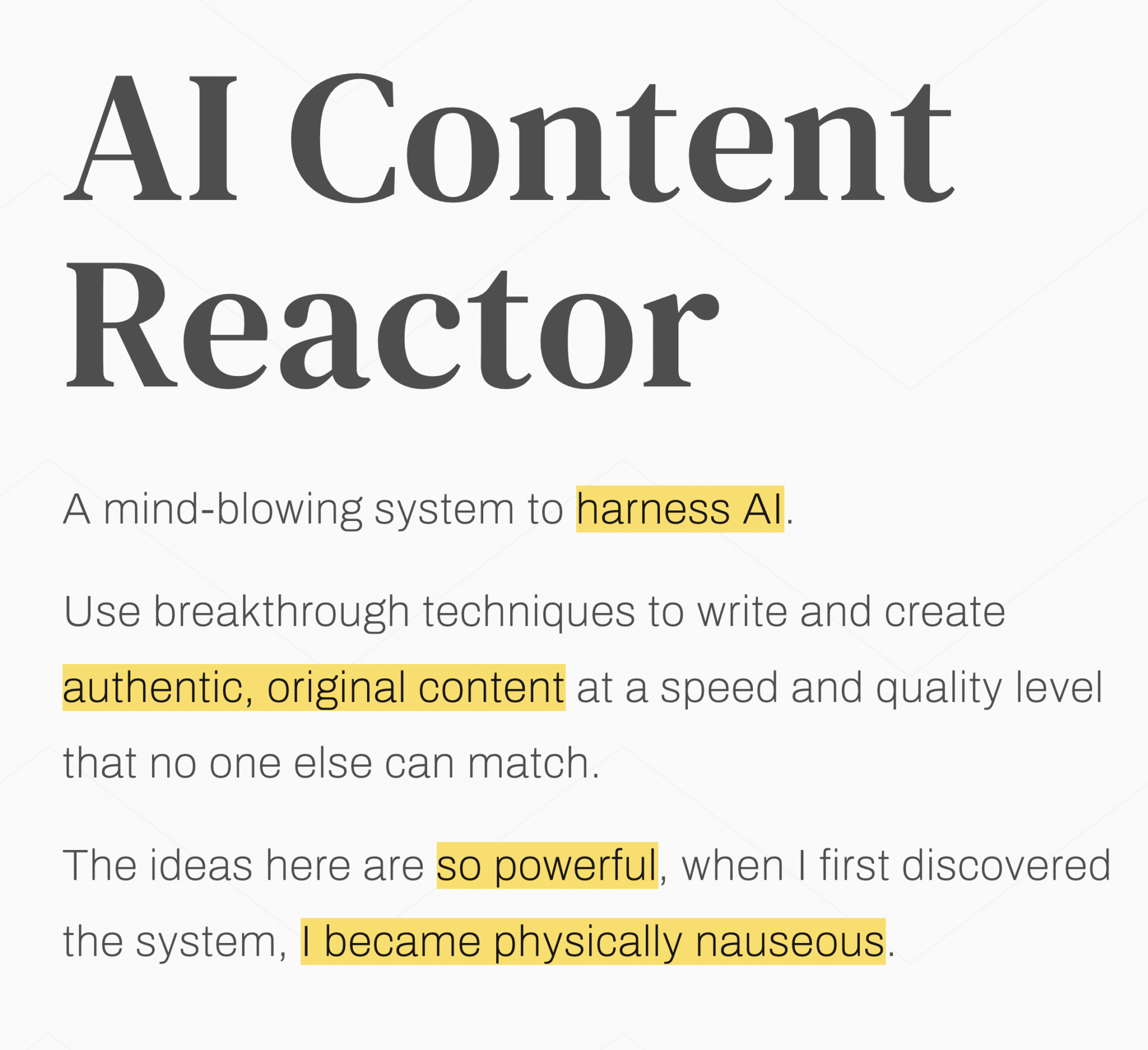We’ve talked about being consistent before, in your blog cadence, social posts, and brand voice. In marketing, consistency is a powerful tool that can shape how consumers see your brand and interact with it. It’s easily dismissed, but shouldn’t be. When every touchpoint feels like the same trusted handshake, shoppers stop questioning and start buying.
Today’s always-on, hyper-connected world has trained people to sniff out disconnects instantly. Whether it’s the tone of your blog posts, the reliability of your support, or the integration of your marketing channels, consistent messaging builds trust, reinforces brand identity, and drives conversions.
Neuroscientists can watch the brain light up when it spots a familiar signal. The recognition circuit fires, and the threat circuit cools (e.g., think of the Mac startup chime). That safety shortcut is pure gold for marketers. We’ll break down the science behind this marketing principle, show where brands often drop the ball, and reveal how AI can help improve your results.
Table of contents
- Why does consistency matter in marketing?
- What does neuroscience say about triggers in marketing campaigns?
- How do you apply consistency and triggers in digital campaigns?
- Consistency case studies can be found in any industry.
- AI elevates consistency in marketing to the next level.
- Transform your brand with consistency in marketing.
Why does consistency matter in marketing?
Consistency isn’t just about using the colors, fonts, or taglines in your brand guidelines. It reduces the cognitive load and makes it easier to choose your products or services.
According to neuroscience, we’re wired to seek patterns and familiarity. When the brain recognizes your color palette, typography, and writing cadence, it spends fewer calories vetting you and more considering that “Buy Now” button.
Here is how consistency matters.
Mix-and-match messaging is the marketing equivalent of mismatched socks at a job interview. It sends a bad impression and makes your brand look unkempt. Instead of a mishmash of voice, tone, timing, and colors, aim for a consistent system. Consistency establishes credibility, which shows up as practical wins: higher repeat purchase rate, lower CPA, better retention, and long-term brand loyalty.
What does neuroscience say about triggers in marketing campaigns?
A trigger is a sensory cue that snaps your mind to attention; think catchy jingles, the scent of an orange, or a flash of color as examples. These signals prompt specific behaviors, actions, or emotional responses. Done right, your product or service becomes part of your customer’s habit loop.
For example, the smell of fried chicken can act as a powerful sensory trigger. If that scent has been repeatedly paired with the KFC brand with store visits, drive-thru ads, and bucket imagery, your brain tags that smell to “crispy chicken payoff.”
Neuroscience tells us that triggers like these activate the brain’s limbic system – the emotional powerhouse that helps us form memories and make decisions. This connection is why certain scents, sounds, or visuals can instantly spark a powerful, often subconscious, response.
From a marketing perspective, triggers are essential because they build brand recognition based on a specific emotional response. The limbic system recalls past rewards, dopamine nudges hunger, and suddenly you’re picturing a red-and-white bucket. Same mechanism as Mac’s startup or the Nike swoosh, just routed through your nose instead of your ears or eyes.
Triggers help build positive user behavior.
The power of triggers goes beyond simple recognition. They create what psychologists call “associative memory networks.”
Let’s take a health food brand as an example. It consistently uses green hues, fresh imagery, and positive, health-focused language. The brand image reinforces the message of vitality. Interestingly, it also builds a mental shortcut.
Over time, these triggers form a cognitive connection that tells the brain, “This brand equals healthy choices.” When a customer later considers a lifestyle change or a healthier diet, this association can heavily influence their decision.
From a neuroscience standpoint, triggers help create useful habits. When the same cue leads to a positive outcome repeatedly, the brain strengthens that pathway, making the action more likely next time. Well-designed triggers, sounds, visuals, or timely notifications remind people to take beneficial steps like logging into an app, refilling a subscription, or using a loyalty reward. Over time, the behavior becomes automatic, and your brand becomes the default choice when that need arises.
How do you apply consistency and triggers in digital campaigns?
Digital platforms like TikTok, Instagram, and YouTube offer perfect opportunities to leverage these triggers. For example:
Video Campaigns
Using consistent music, color schemes, and messaging across your video ads strengthens brand recall. If you’ve ever been a YouTube scroller, you know that videos are a dime a dozen and ads even more so. Yes, your ad needs to stand out, but it also needs to stand out uniquely. What is your brand’s differentiator? This may be the unique je ne sais quoi that ties all of your videos and marketing together, helping you stand out.
Social Media
Develop a unique voice that remains consistent across posts, stories, and reels, creating a recognizable digital footprint. Pull up your Instagram and look at the list of posts. Do they have anything that ties them together and says, “Yes, that’s my brand.”? If not, you need a more consistent brand.
Email Marketing
Use consistent email templates and tone to build long-term relationships with subscribers. If your business emails start with “Hello, Mr. X,” for example, a follow-up email shouldn’t begin with “Howdy.” It makes one, or the other, or both look disingenuous. Pick one and stick with it so your target market knows it’s you.
Consistency case studies can be found in any industry.
Is there any proof that consistency in marketing is even a thing? Yes, absolutely. Let’s look at four well-known brands that do consistency well.
GEICO delivers a loud, single-message drumbeat.
GEICO has rotated mascots and creative styles for years, but the promise never wobbles: “15 minutes could save you 15% or more.” The line shows up everywhere – TV, radio, pre-roll, display – until it becomes a reflex. One cue (the line) predicts one reward (save money/time). Different costumes, same benefit, whether you’re a caveman or a gecko. That’s consistency doing the heavy lifting while the creative changes clothes. Sure, there are other GEICO commercials, but they always return to 15 minutes.
Spotify Wrapped turns consistency into a ritual.
Every December, Spotify has the same event: bright cards, your year in numbers, and one-tap sharing. The format barely moves, which is the point. People expect it, open the app to see “their” story, and post it. Timing, layout, and flow stay familiar, so engagement doesn’t depend on relearning the experience. Consistent cadence plus a consistent format equals a reliable trigger that drives logins and social reach.
McDonald’s proves operations are the brand.
Golden arches, the fry smell, a core menu, the counter flow – it’s all nearly identical worldwide. The experience is standardized end-to-end: signage, packaging, order rhythm, drive-thru script. That predictability lowers decision time and anxiety. Families, college students, and late-night drive-through aficionados all know exactly what they’ll get in five minutes. Here, consistency is visual as well as operational, and it turns a meal into muscle memory.
Stripe earns developer trust with consistency in docs and UI.
Stripe’s interface and documentation read like one product, even as new tools roll out. Navigation patterns repeat, code samples follow the same structure, error messages use the same tone, and test keys work the same way across APIs. Developers learn one mental model and reuse it everywhere. Less friction, faster integrations, fewer surprises convert consistency into adoption.
What key aspects do these campaigns share?
- One promise, many executions. Creative changes rotate around the benefit, but the core benefit never changes.
- Cadence you can set a watch by. Ritual timing (e.g., annual Wrapped) or always-on rhythm keeps expectations steady.
- Stable cues across touchpoints. Visual, sonic, and operational signals match in ads, product language, and customer service.
- Cross-channel continuity. The message and experience feel the same on TV, app, web, store, and docs.
- Behavior loops with fast rewards. Clear triggers lead to immediate, satisfying payoffs (quote saved, stats revealed, food served).
- Reusable mental models. Once users learn how it works, they can predict the next step without thinking.
Overall, these campaigns are a masterclass in using consistency to build brand recognition into consumer behavior.
AI elevates consistency in marketing to the next level.
I’d be remiss if I didn’t add Artificial Intelligence into the mix, even though not near as many businesses use AI as it sometimes seems. If you count all business, from micro to enterprise, adoption rate is approximately 10% according to current data from the U.S. Census Bureau. Of course, enterprise adoption is much higher – about 42% of enterprise-scale companies have deployed AI.
Regardless of whether you’re actively using AI as a deployed system or as a casual tool, there’s no doubt that these tools can help you ensure your brand stays consistent across digital touchpoints.
“Smile” Campaign Concept: AI-driven consistency for a dental office
Make every touchpoint feel familiar.
Use AI to keep copy, visuals, timing, and steps the same from the app to inbox to chairside. Patients learn to know and expect exactly what happens next, so they follow through more often.
Personalize their results.
Patients scan their smiles using the practice’s mobile app, which uses AI to analyze their teeth alignment, color, and overall oral health.
The AI generates a personalized “Smile” profile with recommendations for treatments like teeth whitening, Invisalign, or preventive care, based on their unique dental needs.
Provide follow-ups that run like clockwork:
Reminders go out on a predictable cadence (e.g., Tuesdays at 9 a.m.). Subject lines follow one pattern, preheaders follow another, and SMS uses the same short, friendly script. Links land on a standard visit page with the same header, checklist, and payment button placement.
Create a social connection.
Patients can share their Smile reports on their favorite social media platforms, complete with progress tracking, before-and-after images, and personalized oral care tips. The office can run monthly contests, encouraging patients to share their journey using a branded hashtag for a chance to win free treatments or dental products.
Digital and IRL integration stays seamless:
QR codes on mirrors and take-home kits point to the same care page format used in email. Signage, appointment cards, and portal banners reuse the same icon set and microcopy, so instructions never contradict each other.
Include personalized language support.
Multilingual support pulls from a translation memory that standardizes terms (e.g., “Brighten stage,” not five near-synonyms). Patients get the same wording and tone in every language, which keeps instructions clear across locations.
Get market evolution without brand drift.
AI reviews engagement data to tighten the playbook. It makes sure the subject lines, send times, and screen order are all consistent, while guardrails hold the visuals, tone, and steps steady. Small iterations, same experience.
How this drives results (and stays consistent).
- One flow, many users. Everyone follows the same scan → stages → reminder path, reducing confusion.
- Cadence you can predict. Reminders arrive on set days and times; habits form faster.
- Stable cues across channels. The same icons, colors, and phrases appear in app, email, print, and signage, improving the results of your marketing efforts.
- Bounded creativity. Templates allow fresh content without shifting the look or brand message.
- Reusable mental model. Patients learn the Smile stages once and recognize them everywhere.
- Operational reliability. Scripts and templates keep staff delivery uniform, visit to visit.
Net effect: fewer missed appointments, better at-home care, and a brand experience patients can trust without thinking.
Transform your brand with consistency in marketing.
Ready to transform your marketing strategy into a conversion powerhouse? Consistency is one of your secret weapons. In short, build the habit, earn the sale.
Ultimately, you want to be the brand people recognize with their eyes closed. Pick one promise, one tone of voice, and one set of cues – then repeat them everywhere. Standardize the boring parts so the work that should shine actually does.
Bottom line, every interaction counts and triggers cue action. Consistent, authentic marketing messages strengthen your brand’s reputation, increase sales, and drive long-term loyalty. Give customers the same signals and the same outcome, every time, and they’ll come back without thinking about it.
For more insights on the power of consistency and turning your marketing messages into powerful conversion tools, drop your email address and stay in the loop.



































